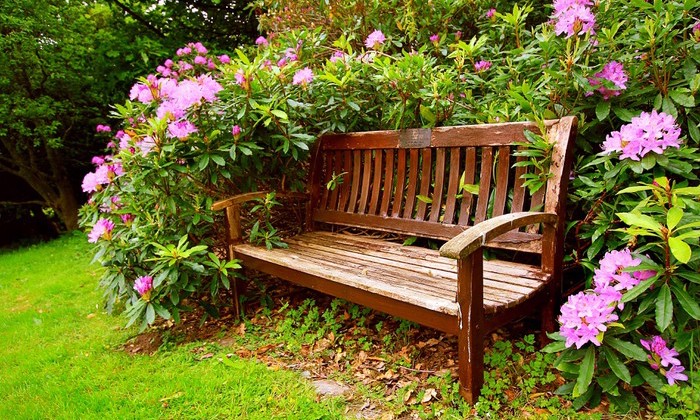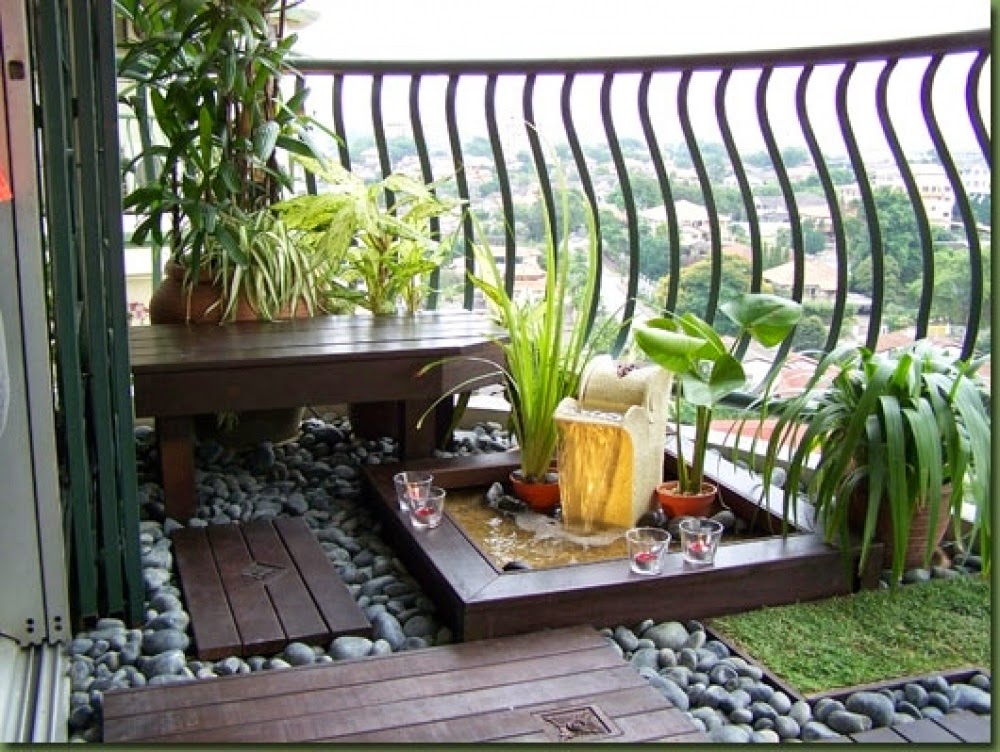In many homes, whether in a town, city or in the middle of the country, people get by with chaotic or boring gardens. A calm and relaxing garden is not in the focus of many as they associate it with hard work and having to maintain it. Fortunately, it doesn’t have to be this way.

Even the loudest garden, like the jungle, can be transformed into a sanctuary of calm and satisfaction, if you know where to focus your attention. From the plants, flowers and trees you choose, to the structures, furniture and accessories, redesigning your garden is a fantastic project that will continue to pay off year after year.
How to create a calm and relaxing garden in 12 steps?
If you have trouble knowing where to start, this is the article for you. To allow you to create a peaceful and relaxing garden, here are 12 ideas that can help inspire you.
1. Clean
When we try to relax in a messy room, we strive to disconnect our mind. With too much mental stimulation and that nagging feeling that you should be ordering; you won’t be able to relax.
Your garden is no different. If you look around your yard and see weeds, overgrown grass, toys, garden equipment, and general trash that you’ve been putting off, you’re not likely to feel calm and at ease. Before doing anything else, start cleaning the garden of everything you don’t want.
2. Identify the main source of unwanted noise
If you are in an especially noisy area, you should try to identify where most of the noise is coming from. It could be the traffic on a nearby highway or the noise from your neighboring properties, but once you know what it is, you can focus your efforts on reducing its impact.
You may not be able to completely eliminate unwanted noise, but planting hedges and trees between you and the source of the noise could help significantly.
3. Layer plants vertically
To prevent noise from entering your garden, you should try to block the space vertically. This means planting evergreens and grasses as your top layer, followed by shrubs and plants that spread outward in the middle, and short perennials that cover the ground in the bottom layer. If you have space restrictions, other options include hanging gardens and living walls.
4. Select column trees
Planting columnar trees (like columns) can create a living hedge that provides an effective barrier between your garden and the outside world. These trees have been bred to grow in a vertical direction, and with regular pruning they can become thin hedges when planted together.
There are several types of tall, slender trees that grow relatively quickly, such as red gum, hornbeam, and red maple.
5. Dense vegetation to create a peaceful garden
The denser the vegetation around your garden, the more sounds you can muffle and filter. Think of it as a sound barrier in the shape of a forest. Planting trees about 10 feet apart will encourage them to grow upright, rather than off to the side, as they will try to compete for sunlight.
However, it is important to remember to allow space for sunlight to enter. Trees like holly possum haw, holly yaupon, lingonberry, and birch are great examples of multi-stemmed trees that will do well.
6. Wind chimes for a calming garden
While not everyone enjoys the sound of wind chimes, many people find them very relaxing. If you are someone who finds the sounds of the fireplace relaxing, try hanging some bells near your seat to replace the unwanted noises.
7. Create a dedicated reserved area
In some cases, it can be difficult to create a garden sanctuary without building a structure. For example, you may not be able to plant trees to enclose your space and you may be living in a particularly busy urban area. In these situations, a summer house or cabin may be the ideal solution.
Summer houses can be like open-air rooms with windows, which means you can enjoy your garden while protecting yourself from the elements (be it wind, rain or extreme heat) and minimizing the impact of surrounding noise.
Add some soft furniture, and you can create a homey space to relax and / or entertain friends.
8. Choose materials that absorb sound
All surfaces in your garden will amplify or absorb sounds. To prevent the sounds in your garden from being reflected and amplified, you should increase the materials that will absorb the sounds and make your space quieter.
For example, soft surfaces such as chair furniture will absorb sound, while metal and stone will amplify it. Soil is likely the biggest culprit for amplification, but you can reduce it by planting lots of plants and flowers with textured surfaces.
9. Bring a water fountain
If you live in a noisy area, or if there is a particular sound you want to drown out, installing a water feature is a great solution. Even a relatively small water feature that makes running, bubbling, splashing, pouring, or spraying sounds can cover unpleasant sounds.
This could be a waterfall in a pond or a small ornament with a water feature included inside.
If for some reason you cannot have a water feature in your garden, technology can be of great help. A speaker in the garden with a sound effects’ app can reproduce the sound of running water (or whatever other sounds you find relaxing) with the push of a button.
Remember to be considerate of your close neighbors if you plan to play outside sounds through a speaker.
10. Attracting birds makes a garden more relaxing and peaceful
Birdsong is widely regarded as one of the most pleasant sounds in nature, if not the world.
In fact, birdsong has even been found to have practical uses including helping people overcome fears, focus during exams, and increase their productivity.
You can take steps to encourage wild birds to visit your garden and make it magical, such as having birdhouses in the trees, a bird feeder, and / or a birdbath.
11. Choose fragrant plants and flowers
In addition to thinking about the noises you want or don’t want in the garden; you can also consider the fragrances around you. There are many plants, herbs, and flowers that have been shown to aid relaxation, such as chamomile and lavender.
Find some fragrances that you find appealing and plant in a border around your garden or in the area where you will be spending most of your time.
12. Choose comfortable furniture
Sitting on garden walls, lawns, splintered wooden furniture, or warped plastic chairs will hardly help you settle into a relaxation session that will ease your troubles.
You should invest in comfortable furniture that you want to sit on, that is, chairs that support your body and keep it comfortable for an extended period of time.
For a truly luxurious seating solution, consider a hanging chair or hammock that also gives a gentle rocking motion as you close your eyes and let the sunlight and gentle breeze caress your face. With running water and birdsong as the background track, it really doesn’t get more peaceful than that.








